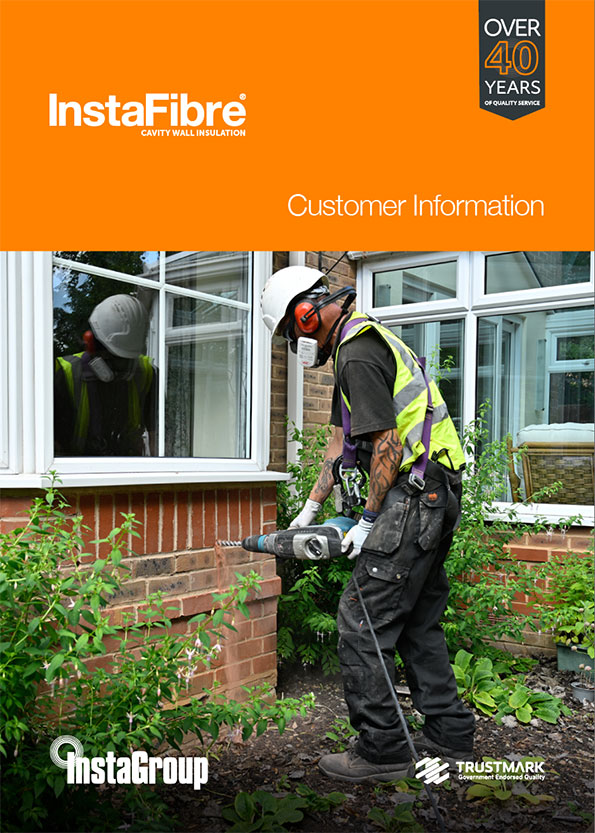Got a question? The InstaGroup experts have put together some Cavity Wall insulation FAQs, along with some information on our other products and services.
Our Cavity Wall insulation FAQs cover the most common queries, from our initial survey through to installation.
Book a no-obligation home energy survey and we can answer the questions that are unique to your home.
What is a 'cavity wall'?
In most homes built after 1920, the external walls are constructed of two brick or block walls with a 50mm (or wider) cavity between them. This was designed to stop rain and damp from outside seeping through to inside walls. Your InstaGroup surveyor can find out how your home was constructed and offer the best insulation advice at your no-obligation survey.
Can I get a grant to install Cavity Wall insulation?
Certain households qualify for funding to install Cavity Wall insulation under the government-backed ECO scheme – your InstaGroup surveyor will be able to advise you.
See ECO Grants for more details.
My home is semi-detached - will Cavity Wall insulation affect my neighbour's property?
If your home's external walls are joined to another house we will plan around this. Our installers use special wall cavity barriers that ensure the insulation material stays in your part of the building so your neighbour’s home will not be affected.
If you think your neighbour may be interested in warming up their home let them know about your plans to install Cavity Wall insulation. We can easily insulate both homes at the same time. We can also insulate party walls (shared walls) as part of your installation.
What happens at my home when Cavity Wall insulation is installed?
Our fully-trained installation team works from the outside of the property, drilling a series of small holes in the mortar between the brickwork. The specified insulation material is then blown in through these holes using a blowing machine to fill the wall cavity.
How long does Cavity Wall insulation last?
InstaGroup Cavity Wall insulation products have a 25-year guarantee under CIGA.
How do I find out if my home is suitable for Cavity Wall insulation?
Ask InstaGroup for a no-obligation survey. Your home will usually be suitable for Cavity Wall insulation if its external walls are unfilled cavity walls, and the masonry or brickwork is in good condition.
Is installing Cavity Wall insulation messy or noisy?
Cavity Wall insulation is a quick and efficient way to save money and energy in your home. You will notice the drilling noise, some vibration and the engine noise of the insulation machine for an hour or two. Before work starts it may be a good idea to remove any precious ornaments from window sills and shelves, and to take down pictures from walls, to protect against accidental breakages caused by vibrations.
There will be mortar and brick dust from the drilling, but our technicians will do their best to clear this away on completion of the job. Please bear in mind that rainy or windy weather can make the clean-up less effective.
Before finishing up, all the holes in the brickwork are filled with matching mortar so you'll barely notice they were there.
How straightforward is it to install Cavity Wall insulation?
It is simple and quick. Our specially trained installation teams work to ensure there is minimal disruption to your home life. Most of the work takes place outside your home, on the exterior walls, so you can carry on your daily life as usual.
If you live in a terraced house we may need to feed the insulation hoses through your house in order to fill the cavity walls at the rear of your property.
Is any maintenance or servicing needed after Cavity Wall insulation is installed?
No. Your Cavity Wall insulation is expected to have a lifetime of over 40 years. Normal building maintenance and repairs of walls should still be undertaken to ensure your home’s weather resistance.
However, please note that if you plan to replace any windows or doors at the property in future, or plan any structural work which involves ‘knocking through’ any external wall sections, the insulation material may drop out, leaving cold spots where insulation is now missing or incomplete. InstaGroup can quote for remedial work, plus any replacement doors and windows required at the same time. This safeguards the insulation benefits and minimises the need for future improvements.


